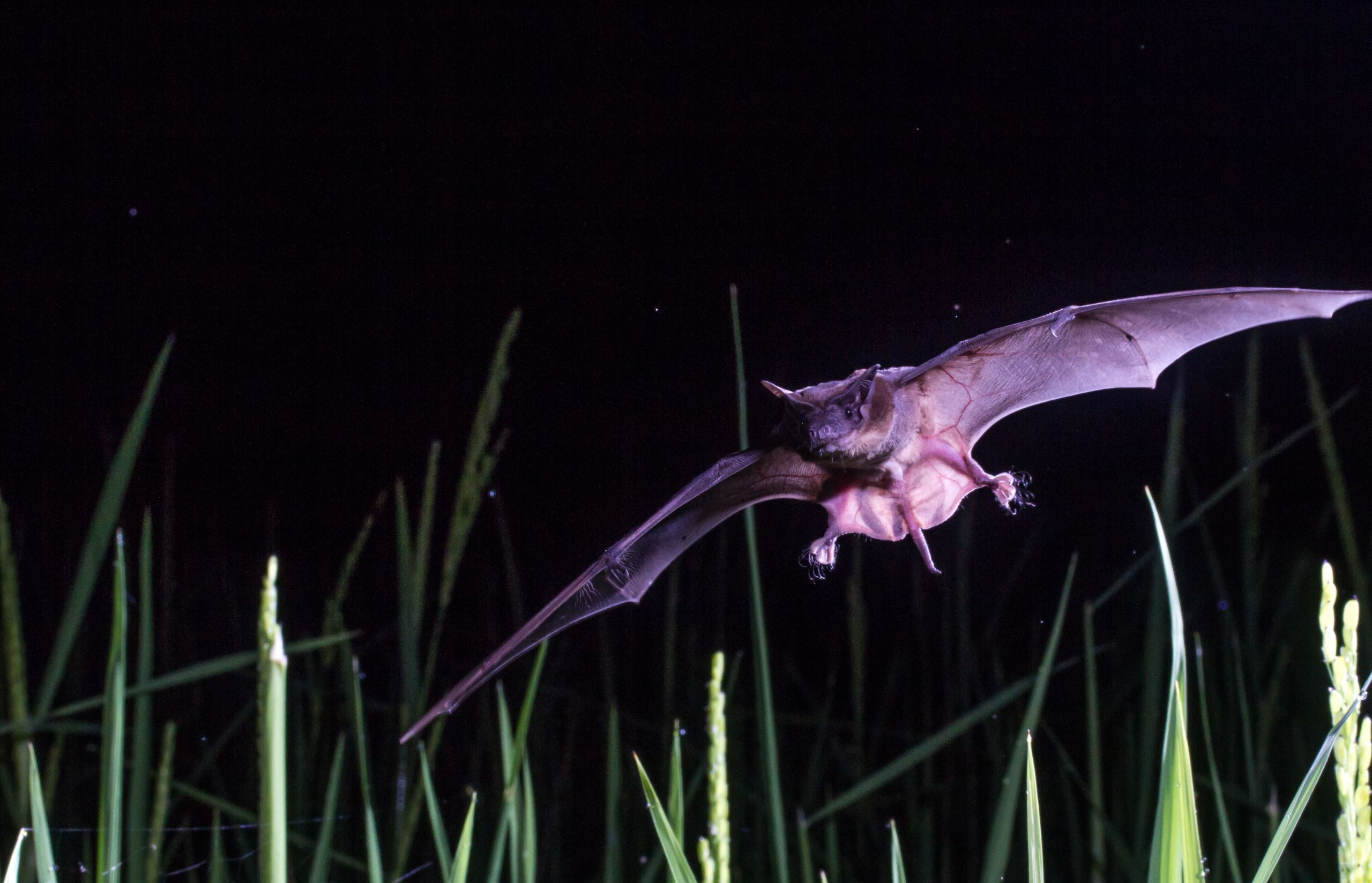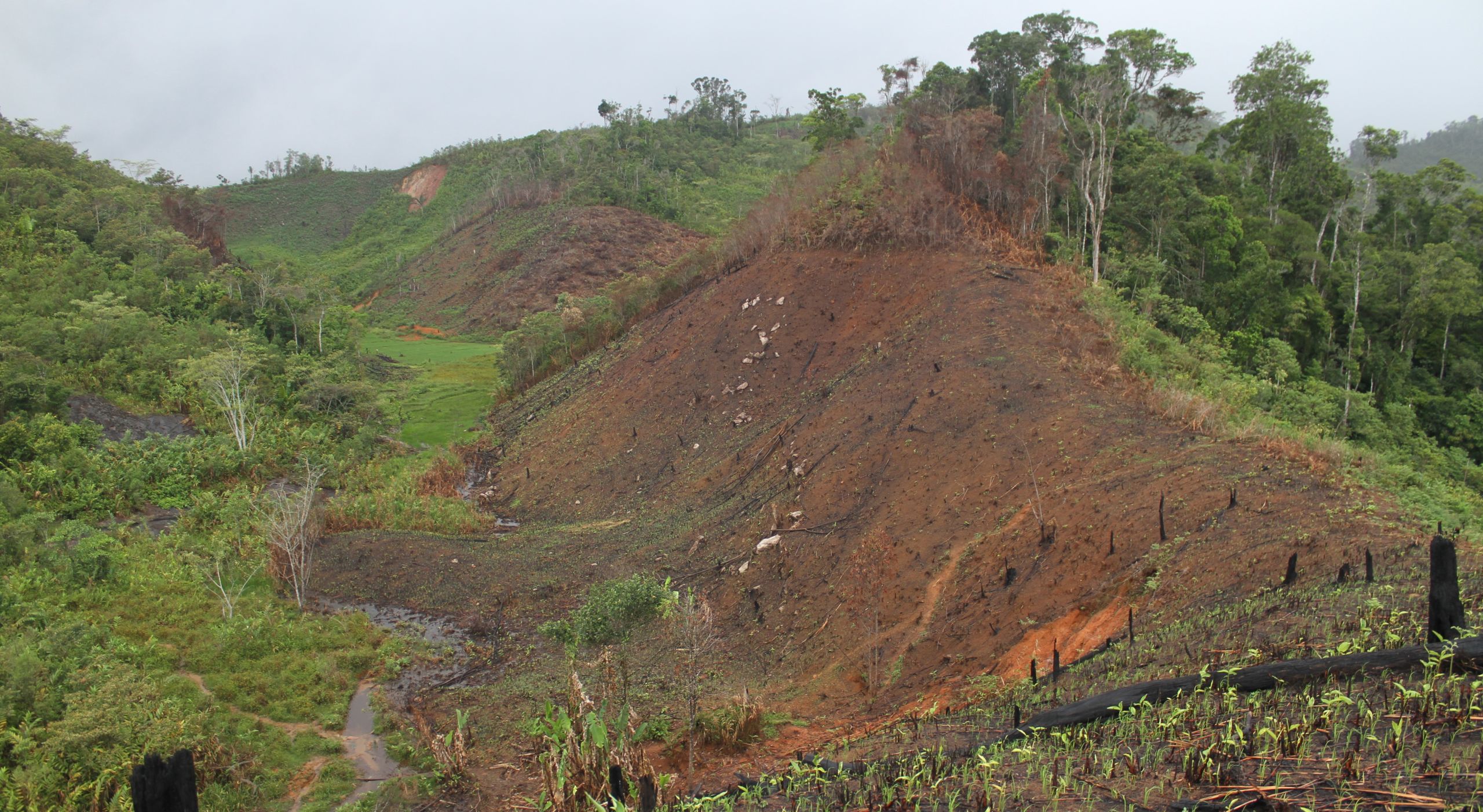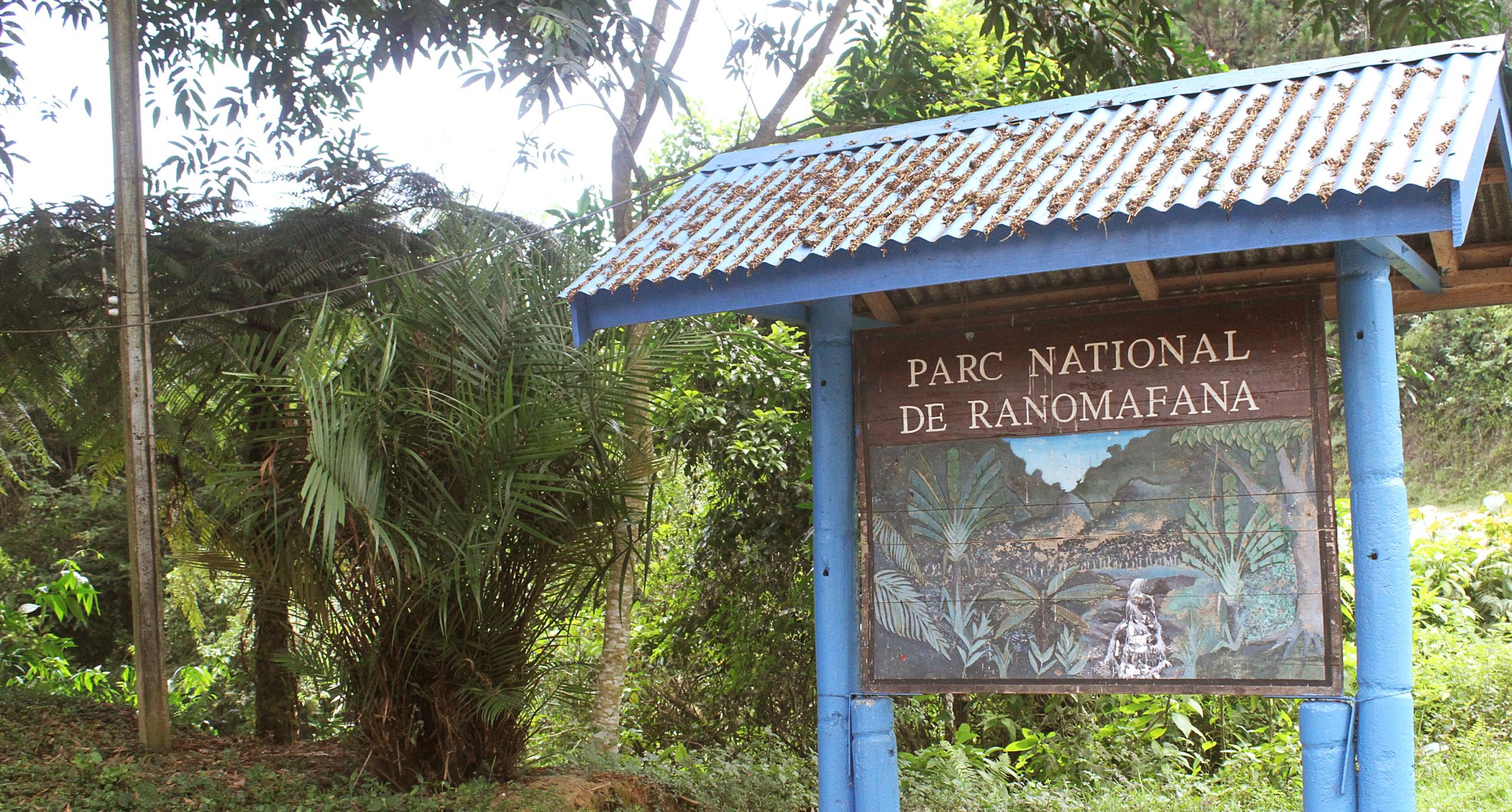Bats to the Rescue
How Madagascar's bats are helping to save the rainforest by fighting insect plagues in the country's rice fields.

There are few places in the world where relations between agriculture and conservation are more strained. Madagascar’s forests are being converted to agricultural land at a rate of one per cent every year. Much of this destruction is fuelled by the cultivation of the country’s main staple crop: rice. And a key reason for this is that insect pests are destroying vast quantities of what is grown, leading local subsistence farmers to clear forest to create new paddy fields.

Forest cleared for rice. Courtesy of Ricardo Rocha
Forest cleared for rice. Courtesy of Ricardo Rocha
The result is devastating habitat and biodiversity loss on the island, but not all species are suffering. In fact, some of the island’s insectivorous bats are thriving and this has important implications for farmers and conservationists alike.
Farmer holding rice pests. Courtesy of Joan de la Malla
Farmer holding rice pests. Courtesy of Joan de la Malla
Enter University of Cambridge zoologist Ricardo Rocha. He's passionate about conservation, and bats. More specifically, he's interested in how bats are responding to human activity and deforestation in particular.
Ricardo Rocha at Cambridge's Zoology Department
Ricardo Rocha at Cambridge's Zoology Department
Rocha's new study shows that several species of bats are giving Madagascar’s rice farmers a vital pest control service by feasting on plagues of insects. And this, he believes, can ease the financial pressure on farmers to turn forest into fields.
Bats comprise roughly one-fifth of all mammal species in Madagascar and thirty-six recorded bat species are endemic to the island, making it one of the most important regions for conservation of this animal group anywhere in the world.
Setting up bat nets. Courtesy of Joan de la Malla
Setting up bat nets. Courtesy of Joan de la Malla
Co-leading an international team of scientists, Rocha found that several species of indigenous bats are taking advantage of habitat modification to hunt insects swarming above the country’s rice fields. They include the Malagasy mouse-eared bat, Major’s long-fingered bat, the Malagasy white-bellied free-tailed bat and Peters’ wrinkle-lipped bat.
'These winner species are providing a valuable free service to Madagascar as biological pest suppressors’, says Rocha. ‘We found that six species of bat are preying on rice pests, including the paddy swarming caterpillar and grass webworm. The damage which these insects cause puts the island’s farmers under huge financial pressure and that encourages deforestation.'
Courtesy of Adrià López-Baucells
Courtesy of Adrià López-Baucells
The study, now published in the journal Agriculture, Ecosystems and Environment, used state-of-the-art ultrasonic recorders and molecular analysis to investigate the feeding activity of insectivorous bats in the farmland bordering the Ranomafana National Park in the southeast of the country.

Courtesy of Ricardo Rocha
Courtesy of Ricardo Rocha
The researchers recorded over a thousand bat ‘feeding buzzes’ (echolocation sequences used by bats to target their prey) at 54 sites, to identify their favourite feeding spots.
This revealed that bat activity over rice fields was much higher than it was in continuous forest – seven times higher over irrigated rice fields, and sixteen times higher over hillside fields – leaving no doubt that the animals are preferentially foraging in these man-made ecosystems.
The researchers suggest that the bats favour hillside fields most because lack of water and nutrient run-off make these crops more susceptible to insect pest infestations.
The team setting up bat nets. Courtesy of Joan de la Malla
The team setting up bat nets. Courtesy of Joan de la Malla
Rocha and his team next used DNA barcoding techniques to analyse droppings collected from bats captured within the rice plantations and nearby forest. All six species of bat were found to have fed on economically important insect pests.
While the findings indicated that rice farming benefits most from the bats, the scientists also found pests of other crops in their droppings, including the black twig borer (a pest of coffee), the sugarcane cicada, the macadamia nut-borer, and the sober tabby (a pest of citrus fruits).
‘The effectiveness of bats as pest controllers has already been proven in the USA and Catalonia’, said co-author, James Kemp, from the University of Lisbon. ‘But our study is the first to show this happening in Madagascar, where the stakes for both farmers and conservationists are so high.’
Local people may have a further reason to be grateful to their bats. While the animal is often associated with spreading disease, Rocha and his team found evidence that Malagasy bats feed not just on crop pests but also on mosquitos – vectors of malaria, Rift Valley fever virus and elephantiasis – as well as blackflies, which spread river blindness.
Rocha and local children talk bats. Courtesy of Joan de la Malla
Rocha and local children talk bats. Courtesy of Joan de la Malla
So what next for man and bat?
'The relationship is complicated', says Rocha. 'The bats are seen as a nuisance because they roost in buildings and leave droppings everywhere. At the same time, they are associated with sacred caves and the ancestors, so they can be viewed as beings between worlds. But then when food is scarce, bats become a crucial source of protein for local people who are extremely poor. Even the children will hunt them.'
‘The problem is that while these bats are benefiting from farming, deforestation is also denying them places to roost. With the right help, we hope that farmers can promote this mutually beneficial relationship by installing bat houses.'
Rocha and his colleagues believe that maximising bat populations can help to boost crop yields and promote sustainable livelihoods. The team is now calling for further research to quantify this contribution because Madagascar’s bats currently fall under game species legislation and are not actively protected in the country.
'I'm very optimistic', says Rocha. 'If we give nature a hand we can speed up the process of regeneration.'
Village in the rice fields. Courtesy of Joan de la Malla
Village in the rice fields. Courtesy of Joan de la Malla







